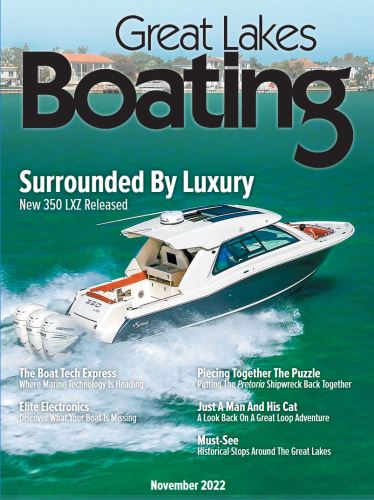 Lifeguards and flag-warning systems are almost as rare as a Pamela Anderson sighting on Great Lakes beaches —and drownings are on the rise. Two engineers and entrepreneurs found a faster, cheaper, simpler technological solution. The SwimSmart beach warning system developed by Michigan Technological University grads uses a traffic-signal model and long-range 5G cellular generation to offer autonomous real-time updates from the National Weather Service. The system can be wired into a building or operate on a standalone solar battery source.
Lifeguards and flag-warning systems are almost as rare as a Pamela Anderson sighting on Great Lakes beaches —and drownings are on the rise. Two engineers and entrepreneurs found a faster, cheaper, simpler technological solution. The SwimSmart beach warning system developed by Michigan Technological University grads uses a traffic-signal model and long-range 5G cellular generation to offer autonomous real-time updates from the National Weather Service. The system can be wired into a building or operate on a standalone solar battery source.
Drownings on the Great Lakes are up from 97 in 2019 to 108 in 2020. Of the 980 overall deaths since 2010, half occurred on Lake Michigan, according to the Great Lakes Surf Rescue Project, which reports 34 drownings so far this year. Two of Michigan’s busiest beaches on the Lake Michigan shoreline at Frankfort and Muskegon started using the SwimSmart systems this summer.
Not all drownings can be attributed to conditions at swimming beaches. But helping swimmers exercise good judgment is a powerful preventative measure, said Professor Andrew Barnard, the director of Michigan Technological University's Great Lakes Research Center who along with fellow MTU Husky Jacob Soter co-founded SwimSmart Warning Systems. “Almost anyone knows to stay out of the water when waves are six feet or higher,” Barnard said. “It’s the three-to-five footers that look deceptively fun. They’re the most deadly.”
Soter said the concept works equally well for remote beaches. He envisions a continuous loop in which the SwimSmart systems feed information back to the Weather Service for more frequent and accurate localized reports to the public. The capability would be especially helpful in the “dark spots” where forecasting tools are not currently deployed and help meet the need for more near-shore buoys on the Lakes, where most are offshore.
Beyond the bare-bones warning system, there are numerous applications for additional smart-connected beachfront technologies, including Wi-Fi for people working remotely who want to live and play on the Great Lakes.

